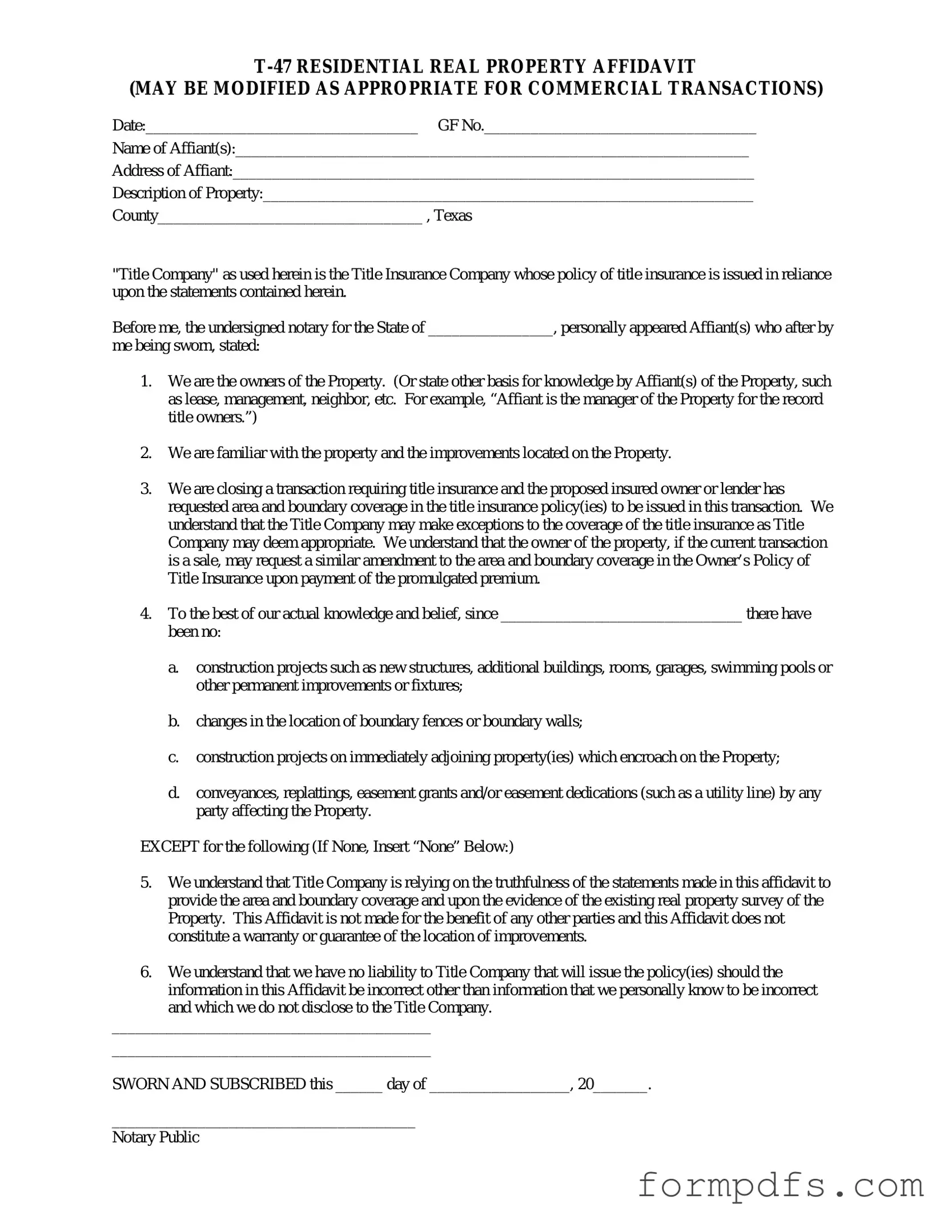What is the Texas residential property affidavit T-47 form?
The Texas residential property affidavit T-47 form is a legal document used in real estate transactions. It serves as a declaration by the owner of a residential property regarding the status of the property, particularly in relation to any improvements or changes made to it. This affidavit is often required by lenders during the mortgage process to confirm the condition and ownership of the property.
Who needs to complete the T-47 form?
The T-47 form must be completed by the property owner or the seller when they are selling their residential property. Lenders may require this affidavit to ensure that there are no undisclosed issues with the property that could affect its value or the loan agreement. It is essential for anyone involved in a real estate transaction to understand when this form is necessary.
What information is included in the T-47 form?
The T-47 form includes details about the property, such as its address and legal description. It also asks the owner to provide information about any improvements made to the property, such as renovations or additions. Additionally, the form may require the owner to affirm that there are no encroachments or other issues that could affect the property’s title.
Is the T-47 form legally binding?
Yes, the T-47 form is a legally binding document. By signing it, the property owner certifies that the information provided is accurate to the best of their knowledge. If any false information is discovered, it could lead to legal consequences, including potential liability for damages. Therefore, it is crucial to complete the form honestly and thoroughly.
How is the T-47 form submitted?
The completed T-47 form is typically submitted to the title company handling the real estate transaction. The title company will review the form as part of the closing process. It may also be required to be included in the documentation provided to the lender for the mortgage approval process. Ensuring that the form is submitted correctly can help avoid delays in closing.
Can the T-47 form be modified after submission?
Once the T-47 form has been submitted and signed, it generally cannot be modified without the consent of all parties involved. If changes to the information on the form are necessary, the owner should consult with their real estate agent or attorney to determine the best course of action. It may be necessary to complete a new affidavit if significant changes have occurred.
Where can I obtain a copy of the T-47 form?
The T-47 form can be obtained from various sources, including title companies, real estate agents, and online legal document providers. It is essential to ensure that the form being used is the most current version, as regulations and requirements can change. Consulting with a professional in real estate can also provide guidance on obtaining the correct form.
